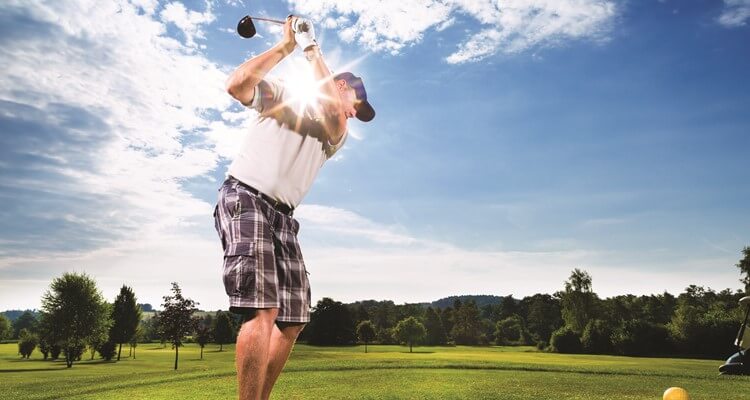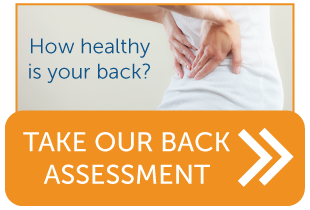A sunny day with blue skies led you to the golf course. Your buddy of twenty-three years was hoping to score a birdie but ended up with an aching back. Was it his golf swing technique? Or his aging body?
Back problems happen to the best golfers like Tiger Woods, and if not careful, they could happen to your friend or you.
Explosive and Repetitive Movement
Although golf is not a contact sport, it is a sport that can result in back injury. Approximately 15 to 35% of those who try their hand at golf end up with low back pain, whereas 55% of professionals have been affected.1
Most often golf injuries are sustained by overuse versus trauma. Repetitive movements and compression of the spine can take its toll on the back. The crucial body rotation in an effective golf swing requires both strength and power from the trunk muscles and the flexibility of the hip joint. Swing technique, playing for extended periods and age can all be a factor as well.
Avoiding Lower Back Pain
Here are some tips to avoid low back pain and injury when playing golf:
- Perform conditioning exercises that strengthen the trunk muscles and maintain the flexibility of the hip joints.
- Lighten your bag. Lower your risk for low back pain due to weight exerted on the spine from carrying a heavy load. Do you really need all of those clubs?
- Perform a 10-minute warm-up routine. It may also improve your overall game.
- Listen to your body. Practice makes perfect, but overdoing it is bad for your back.
- Wear shoes that offer support for hip joints with limited movement due to osteoarthritis.
- Seek professional help to improve your game. A small tweak to your swing may be all that you need.
- Perform a 5 min cool-down. Take 5 minutes to stretch all of the muscles you just used. Your body will thank you for it and you will be able to get back to the course faster!
We Can Help
Low back pain is not the kind of handicap you want in golf. Should you fall into this unfortunate hazard, the good news is that surgery is the last option Spine Team Texas will offer.
Our comprehensive conservative approach to treating low back pain starts with a thorough exam to look at the root cause of your problem. Our experts in bone, joint, and muscular disorders will work with you so you can get back into your golf swing as soon as possible.
If you are currently experiencing back pain, request an appointment with us.
Source
1. Cole, M. H., & Grimshaw, P. N. (2016). The biomechanics of the modern golf swing: implications for lower back injuries. Sports Medicine, 46(3), 339-351.



